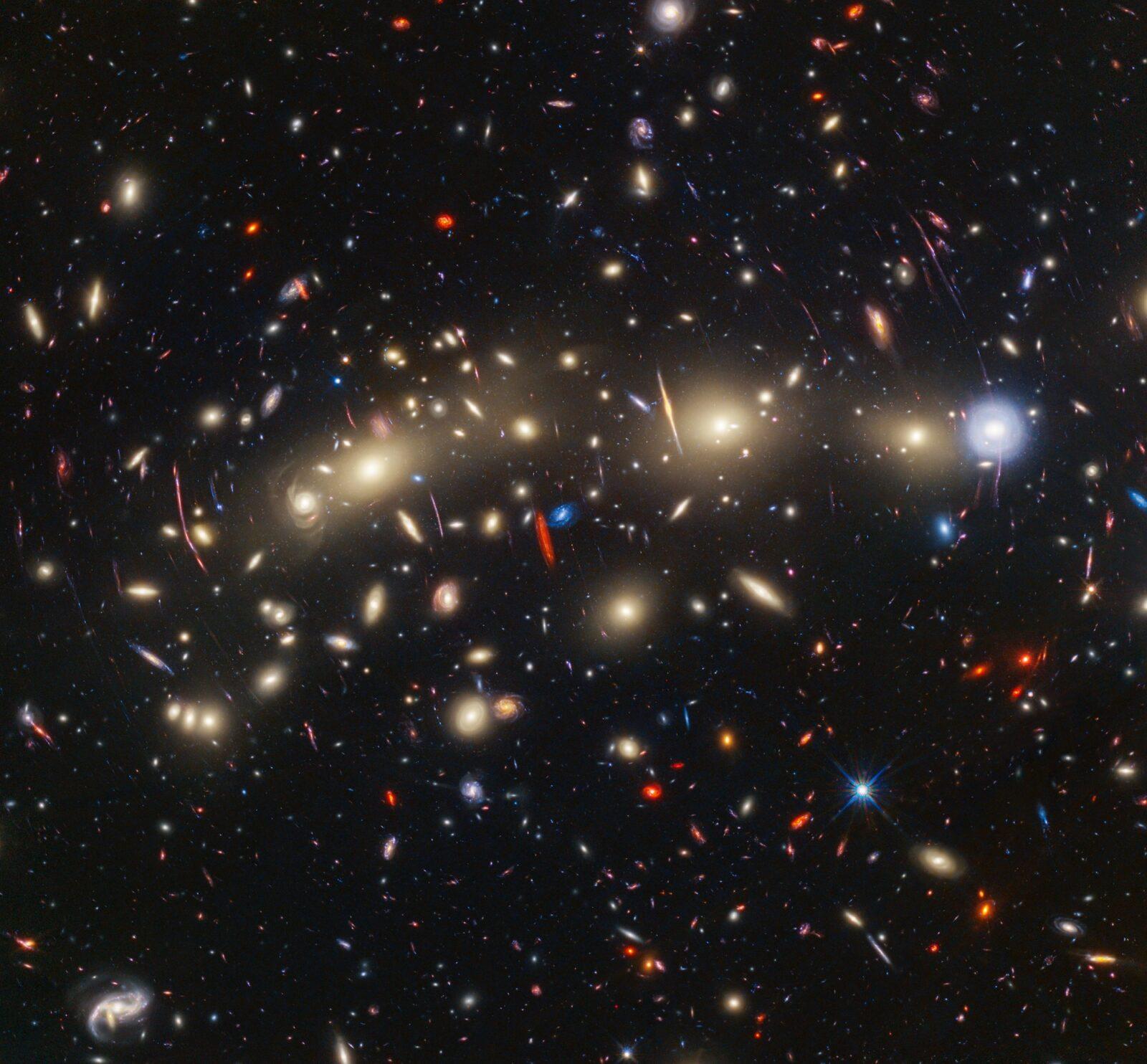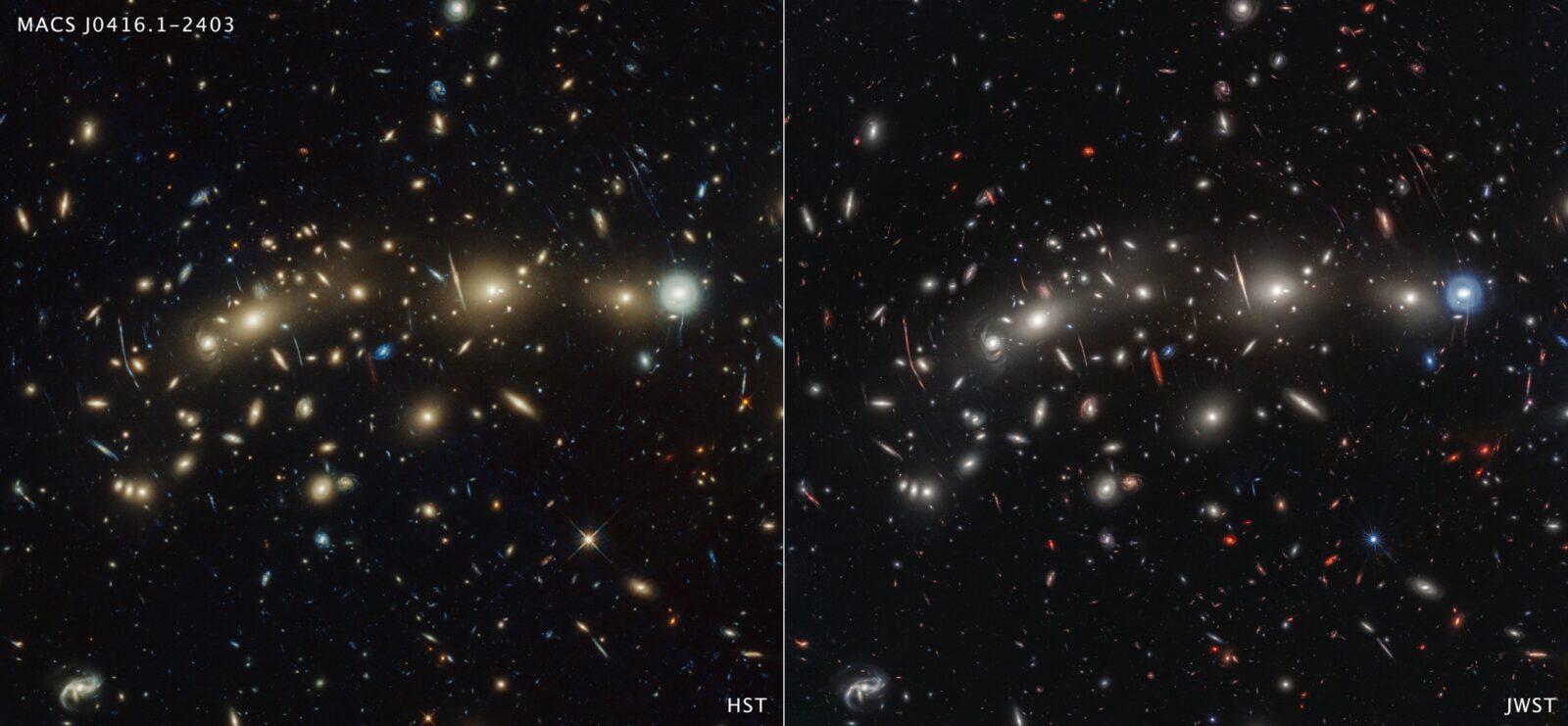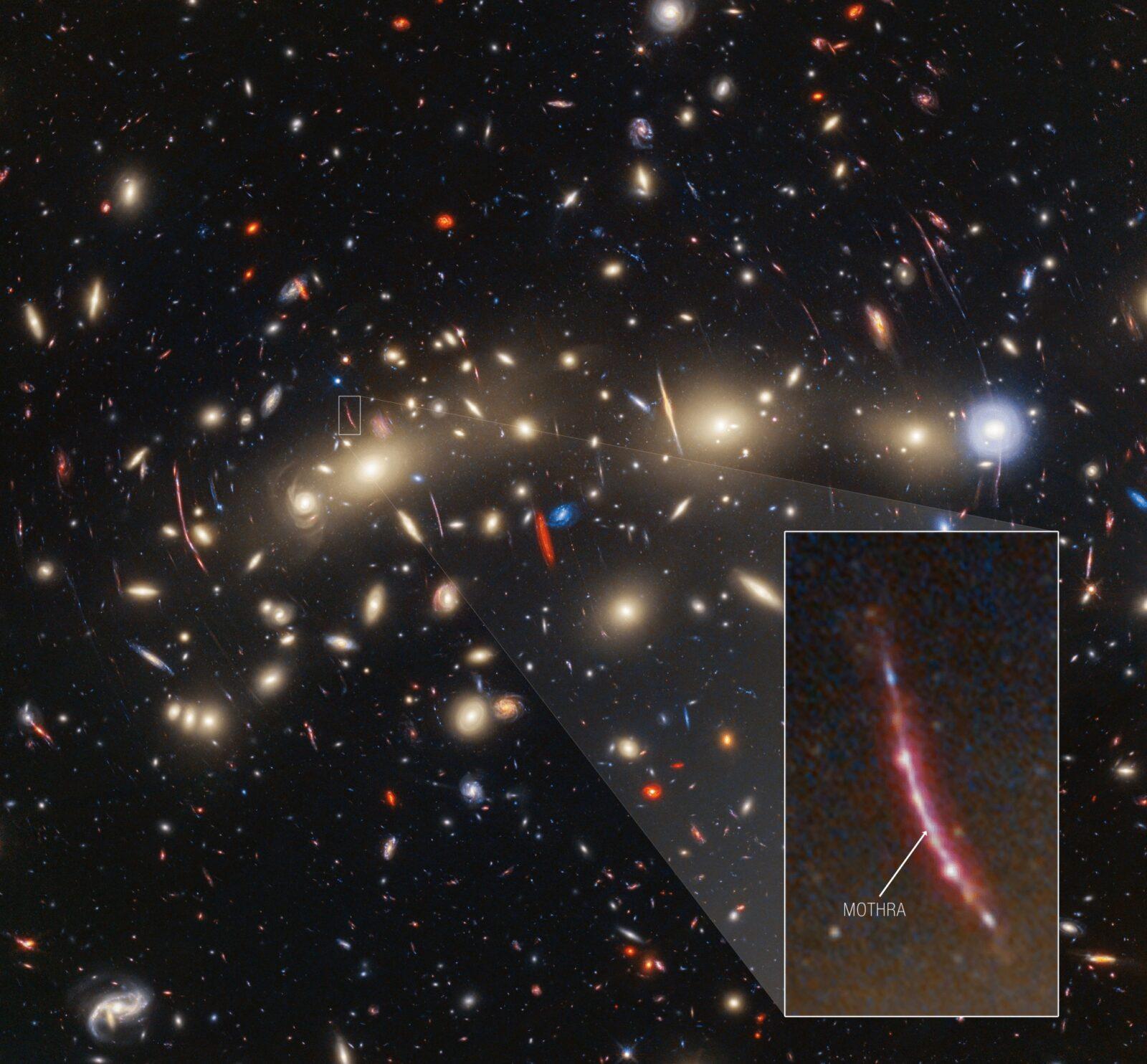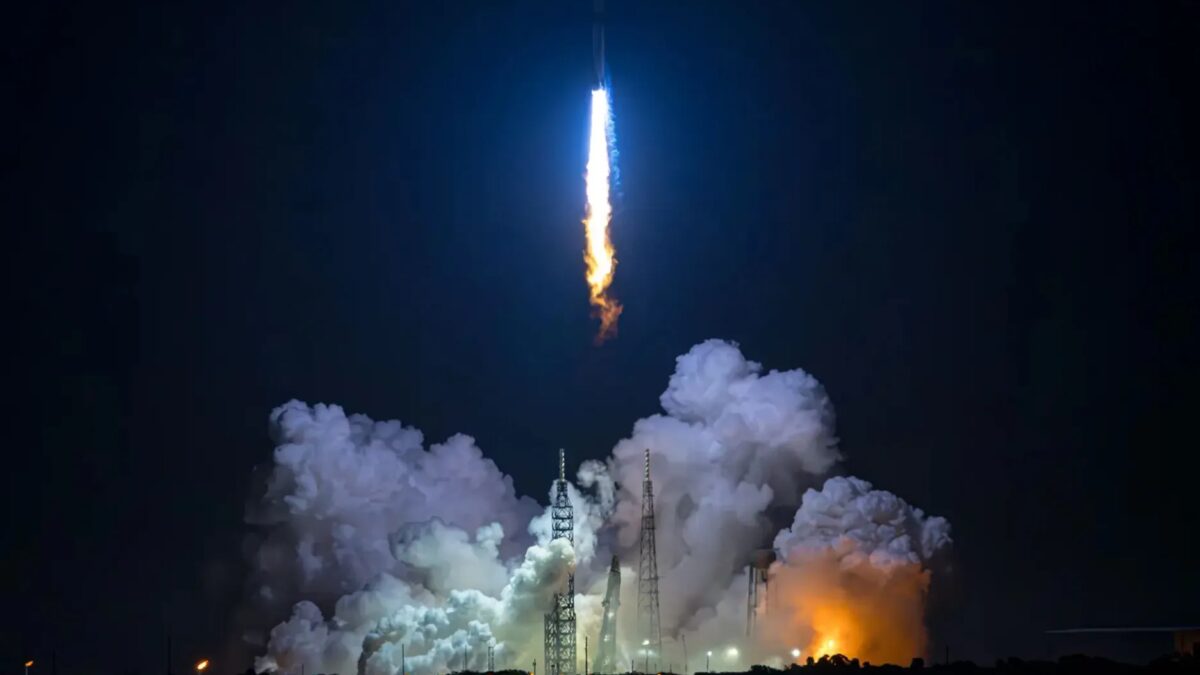Astronomers scientists have revealed the “Christmas Tree” galaxy cluster

Different telescopes make observations at different wavelengths of the spectrum, allowing us to view amazing details of celestial objects. Recently, the Hubble and James Webb space telescopes worked together to capture a fascinating image of a cluster of thousands of galaxies. It would have been impossible to get such an image with just one instrument.
The MACS0416 or “Christmas Tree” cluster, located about 4.3 billion light-years from the Milky Way, is actually made up of a pair of galaxy clusters that are in the process of merging. Eventually, they will merge into a single giant object. Hubble has spent the past decade studying this cluster, searching for distant galaxies – a task that James Webb is now undertaking thanks to more powerful equipment.
The Hubble has been studying this cluster for the past decade, searching for distant galaxies – a task that James Webb is now undertaking thanks to more powerful equipment.
“We nicknamed MACS0416 the ‘Christmas Tree’ cluster because of its bright and colorful lights,” explained astronomer Haojing Yang of the University of Missouri.
“We nicknamed MACS0416 the ‘Christmas Tree’ cluster because of its bright and colorful lights,” explained astronomer Haojing Yang of the University of Missouri.
Objects like MACS0416 are called transients because they change their observed brightness over time. With strong gravity, a cluster of galaxies is amplified, which distorts the light of more distant, background objects – this is gravitational lensing, which astronomers use extensively to observe the farthest reaches of the Universe.
Gravitational lensing is a technique that is used extensively by astronomers to observe the farthest reaches of the Universe.
The transients were discovered by astronomers when they looked at four sets of images taken by the Webb over a period of about four months. They estimate that the mass of the “Christmas Tree” is 10,000 to 1,000,000 times the mass of the Sun.
The “Christmas Tree” is 10,000 to 1,000,000 times the mass of the Sun.
They also found something unusual in a cluster of galaxies: a monster star in the galaxy as it was when the universe was only 3 billion years old. They named the star “Mothra” – after the monstrous Kaiju moth from a Japanese movie.
The star was named “Mothra” – after the monstrous Kaiju moth from a Japanese movie.










